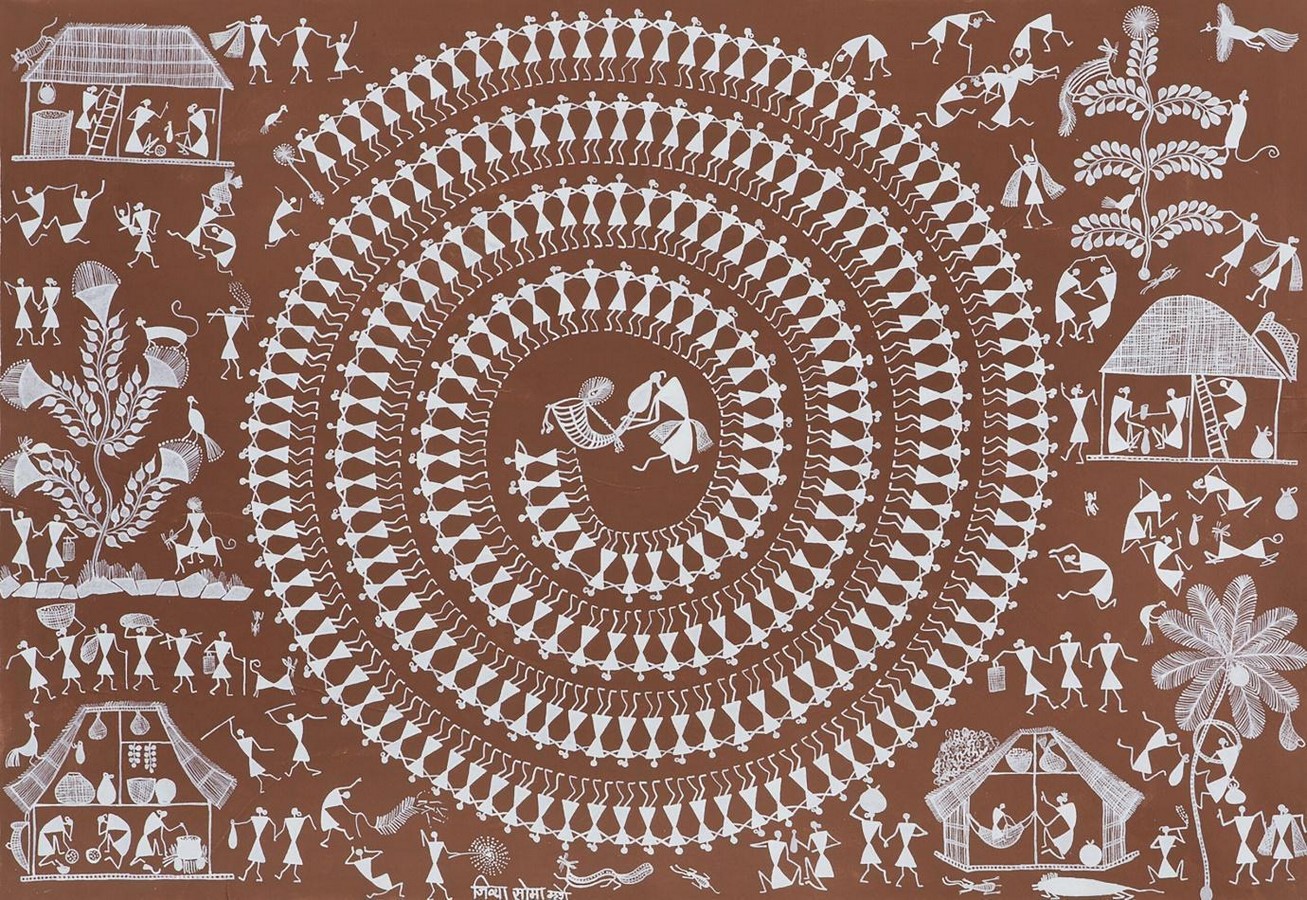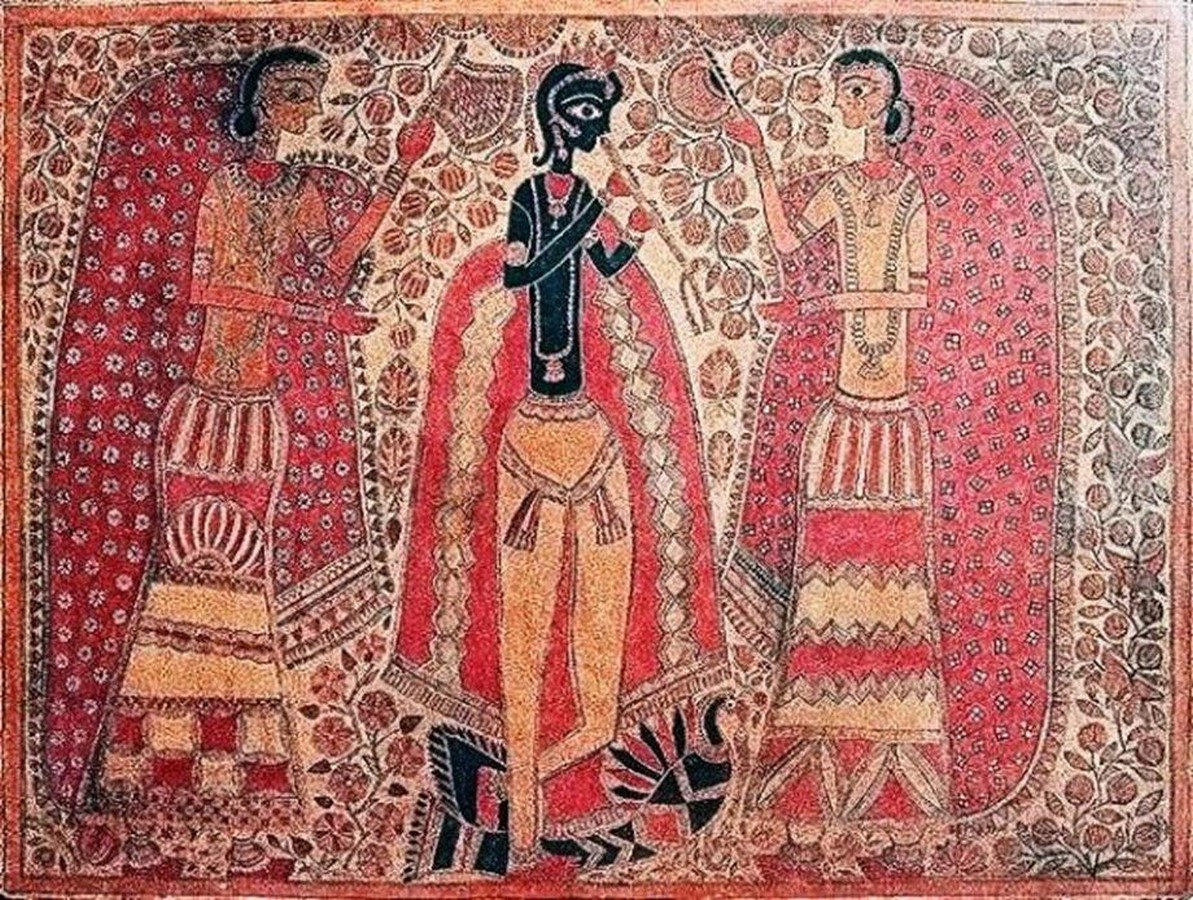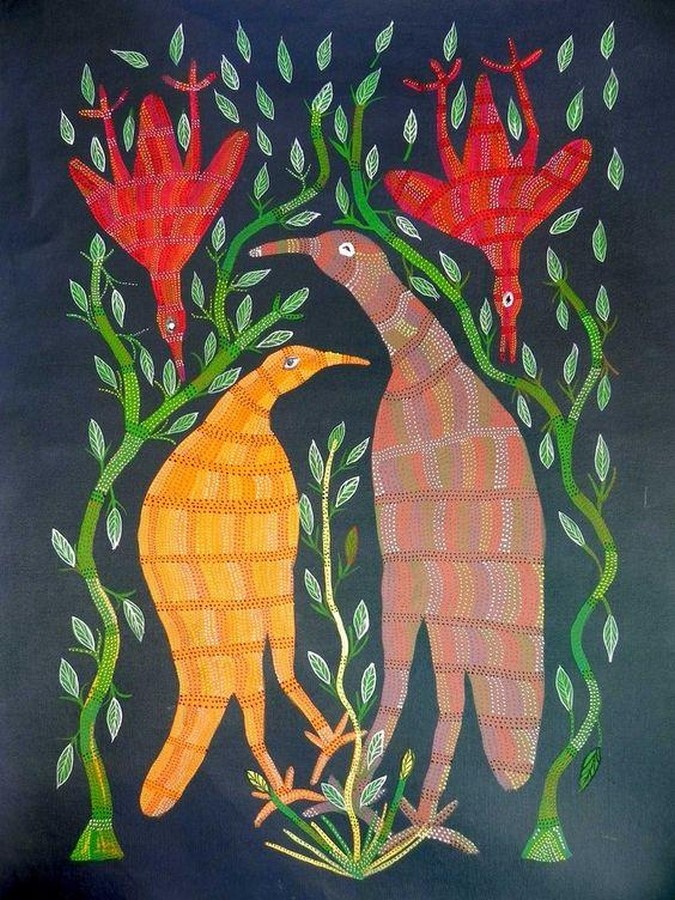Humans are natural Storytellers. Throughout history, they have woven narratives that celebrate nature—the sun, fire, water—and paid homage to these powerful forces of nature. The earliest cave paintings etched onto the walls of the caves depicted the stories of survival, worship, hunting and gathering, and a profound connection to the natural world. They act as tangible symbols of the traditions, occasions, and rituals that have been passed down from one generation to the next generation over the years. Hence, these cave paintings were a means to tell the stories of a ‘way of life’.
Indigenous Art
Indigenous art represents the soul of a culture that reflects the practices and the collective understanding of life. Indigenous art can range from sculpture, paintings, music, and dance to art forms. Indigenous people used art to convey stories through symbols and motifs to depict beliefs and traditions. Traditional Indian artworks like Warli, Bhil, and Madhubani are a few examples of art forms in India.
Warli
Warli art is tribal mural art in Maharashtra that depicts the rural way of life of the state. These visual canvases eloquently encapsulate the daily rhythms of life, portraying the forces of nature, and the simplicity of their belief systems. These walls narrate an infinite array of stories that depict everyday activities such as fishing, hunting, cooking, and harvesting, while others convey more subtle and nuanced lessons in life. geometric shapes such as a circle representing the sun or the moon, a triangle depicting hills and mountains, and a square indicating a sacred enclosure symbolizing fertility and dotted lines. These Warli paintings adorned the mud walls of village huts colored with an earthen red background with white paint used to depict the activities on the dark-colored background.

Madhubani Art
The mud walls of the homes in the Madhubani district of the Mithila region of Bihar were primarily decorated with Madhubani murals. With roots in the Ramayana era, its style is characterized by geometric patterns, with the use of vivid hues to make them more striking. They still the daily life of the people from this region and make use of brilliant natural dyes and pigments.

Bhil Art
In Madhya Pradesh, Gujarat, Maharashtra, and Rajasthan, there is a tribal group known as the Bhils. They used organic items like neem sticks and other twigs, and natural dyes filled in with earthy, yet bright colors to make their artwork with an overlay of uniform dots in several patterns and colors each artwork tells a tale about the land. These pieces told stories about people, animals, insects, deities, and festivals along with glimpses of Sun and Moon in some paintings. They depicted legends and folklore along with documentation of religious occasions and the death and birth of the people of the community.

These are just a few of the examples of ancient art forms from the wide range of indigenous paintings that form a unique identity of the community. They are a means of connecting to the past and means of understanding the intricacies of the culture during a certain period. Over the years these art forms are losing their significance, being replaced by other contemporary art forms. Hence losing the identity of the indigenous people. These artworks are finding their contemporary voices and are now being displayed on sarees, scarves, kurtas, home decor, etc
Preserving Cultural Identity Through Architecture
Unlike traditional art, Architecture Stands the Test of time. Architectural monuments form a part of rich cultural heritage and form a distinct identity. However, in the face of changing times, increasing tourism and environmental concerns, the preservation of architecture becomes extremely vital. Preservation of Cultural Identity through Architecture can be done mainly in two ways.
1.Preservation of historical and cultural buildings that have a historical significance from human impact. These buildings with their craftsmanship, material, style speak of the cultural influences at a particular time.
2.Another way is to build spaces that celebrate the richness of a culture. Designing of Cultural centers to display and protect the narratives, values, and identities embedded in a particular region. This is done with the aim to preserve these region-specific artforms so that they don’t lose their identity.
For example, the Cholamandal Artists’ Village, is a renowned artist community.This is a space dedicated to artisans, reminiscent of historical gatherings in cities and villages throughout history. This vibrant village epitomizes the spirit of artistic expression and communal creativity.

3.The third way is the intangible way of spreading knowledge through the medium of educational endeavors, the recording of historical contexts, and programs designed to involve the local community in comprehending and valuing their cultural heritage.
Celebrating Cultural Diversity Through Art
From Rajasthan to Kerala, Odisha to Bihar, every region boasts its unique artistic heritage. an increasingly interconnected and diverse world, these art forms are more important to reflect and celebrate the diversity across the country. Art has always been a platform to express the complexity of identity,essence of a culture, and meaningful expression of experiences. Through the power of storytelling, these art forms speak volumes about the people and the place. It encourages a sense of curiosity and regard for many cultures to embrace the richness of cultural diversity.
Conclusion
In essence, preservation is about safeguarding the essence of cultural identity, the stories, values, and legacies the indigenous people embody. This can prevent the fading of the identity of a region. With the ever-rising globalization, the issue of cultural importance becomes a pressing issue. Especially in India, which is ethnically diverse, with different languages, traditions, religions, and ethnicities it is important to safeguard Indigenous art that withholds the cultural identity. Hence, promoting and preserving the identity and diversity of indigenous art is not just a matter of historical or cultural significance; holds immense importance in nurturing a profound sense of belonging, social unity, and a robust sense of identity.
References:
Chadha, A. (2023, June 22). Cultural Revival by Incorporating Indigenous Art in Contemporary Design. Caleidoscope. Retrieved September 17, 2023, from https://www.caleidoscope.in/art-culture/cultural-revival-by-incorporating-indigenous-art-in-contemporary-design
From Traditional Art to Sustainable Livelihoods: The Role of Tribal Art in India’s Economy. (2023, March 3). The Times of India. Retrieved September 17, 2023, from https://timesofindia.indiatimes.com/readersblog/the-bora-booktique/from-traditional-art-to-sustainable-livelihoods-the-role-of-tribal-art-in-indias-economy-51116/
How Arjuna came into possession of Gandiva bow. (2018, March 14). freeflow. Retrieved September 17, 2023, from https://ritsin.com/arjuna-possession-of-gandiva.html/
Indigenous art and cultural preservation | USA Art News. (2023, August 1). Usa ART newS. Retrieved September 17, 2023, from https://usaartnews.com/news/indigenous-art-and-cultural-preservation
Pal, S. S., Das, A., & Anand, A. (2023, May 16). Art as a Preservation of cultural identity. The Talented Indian. Retrieved September 17, 2023, from https://www.thetalentedindian.com/art-as-a-preservation-of-cultural-identity/
Sarade, M. (n.d.). Warli Art – The Tribal art expressing life through geometry. Exotic India Art. Retrieved September 17, 2023, from https://www.exoticindiaart.com/article/warli-art-the-indigenous-tribal-art/
Warli Painting. (2022, April 21). MAP Academy. Retrieved September 17, 2023, from https://mapacademy.io/article/warli-painting/















